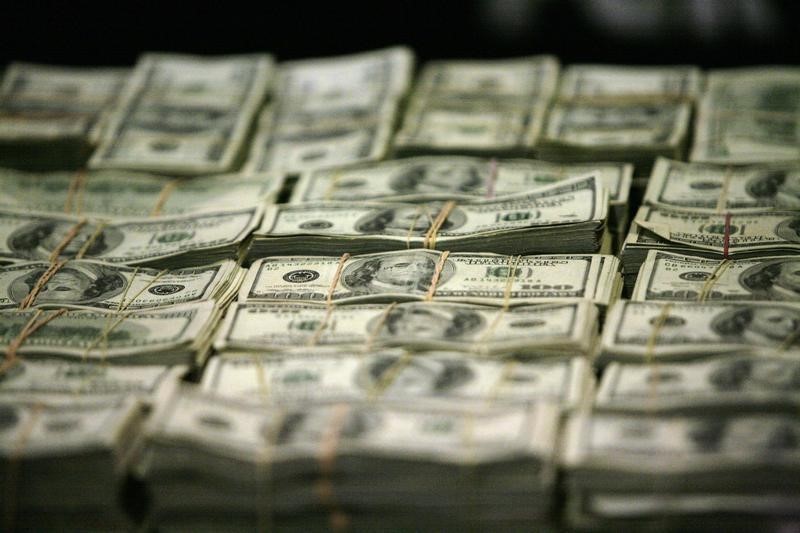Investing.com - The dollar moved back up toward two-and-a-half week highs against the other major currencies on Thursday, as invesrtors shrugged off mixed U.S. economic reports.
USD/JPY was down 0.19% at 109.13, still well above Monday’s 17-month low of 107.62.
The U.S. Department of Labor said the number of individuals filing for initial jobless benefits in the week ending April 9 decreased by 13,000 to 253,000 from the previous week’s total of 266,000 which was revised down from 267,000.
Analysts had expected jobless claims to rise by 3,000 to 270,000 last week.
A separate report showed that the U.S. consumer price index rose 0.1% in March, disappointing expectations for a 0.2% gain, after a 0.2% slip the previous month. Year-on-year, consumer prices rose 0.9% last month, confounding expectations for an increase of 1.0%.
Core CPI, which excludes food and energy, rose 0.1% in March, compared to expectations for a 0.2% increase and after a 0.3% gain the previous month.
The dollar strengthened earlier, after data on Wednesday showing that Chinese exports rose for the first time in nine month in March eased concerns over a China-led slowdown in global growth.
EUR/USD slipped 0.17% to 1.1256, below Tuesday’s six-month peaks of 1.1464.
Meanwhile, the dollar was higher against the pound, with GBP/USD down 0.51% at 1.4131 and was steady against the Swiss franc, with USD/CHF at 0.9671.
Earlier Thursday, the Bank of England’s monetary policy committee held the benchmark interest rate at 0.5%, where it has been since March 2009.
All nine MPC members also unanimously agreed to make no changes to the central bank's £375 billion asset-purchase program.
The Australian dollar was stronger, with AUD/USD up 0.59% at 0.7698, while NZD/USD dropped 0.91% to 0.6856.
The Australian Bureau of Statistics reported on Thursday that the number of employed people rose by 26,100 in March, beating expectations for an increase of 20,000.
The report also showed that Australia’s unemployment rate ticked down to 5.7% last month from 5.8% in February, confounding expectations for a rise to 5.9%.
Elsewhere, USD/CAD rose 0.37% to 1.2863 after data showed that Canada’s new house price index rose 0.2% in February, compared to expectations for an uptick of 0.1% and after a 0.1% gain the previous month.
The U.S. dollar index, which measures the greenback’s strength against a trade-weighted basket of six major currencies, was up 0.17% at 94.97, re-approaching a two-and-a-half week high of 95.21 hit earlier in the day.
